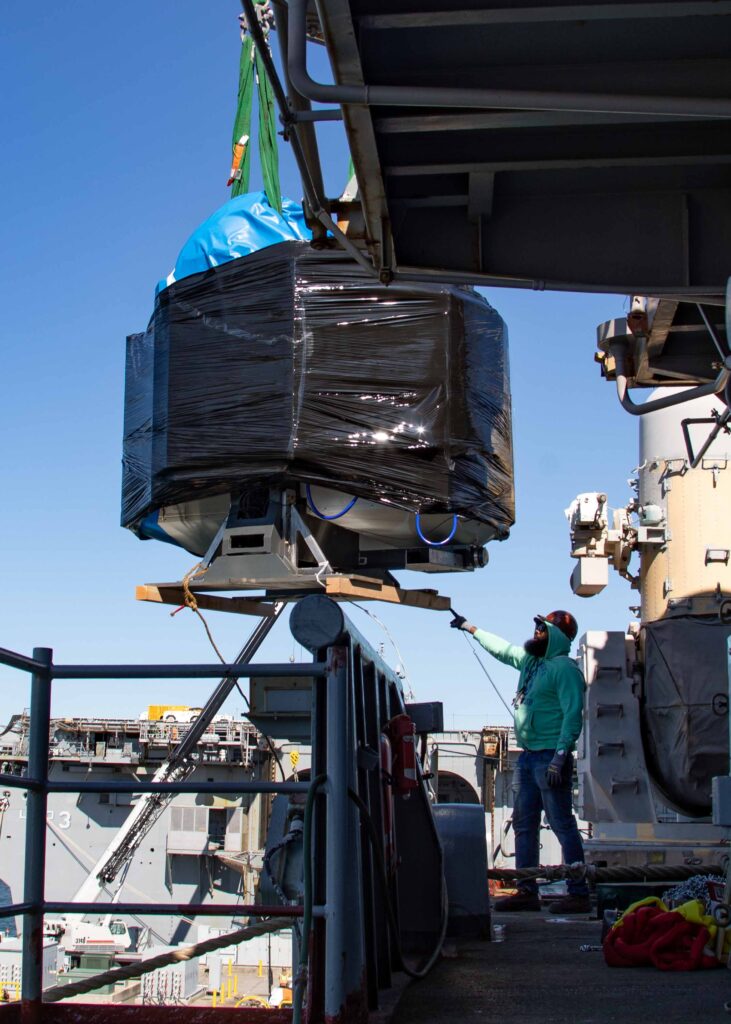
ARLINGTON, Va. — The U.S. Navy has installed a 3D printer capable of producing metal parts for ships on the amphibious ship USS Bataan (LHD 5) in an experiment that could be expanded to across the fleet, a Navy official told Seapower in an interview.
The Navy has already experimented with 3D-printing parts, but they have used polymer printers in the past. But since most of the parts that need replacing are metal, they have limited utility — hence the impetus for this test, said Jim Pluta, additive manufacturing program manager at Naval Sea Systems Command. The Navy completed installation of a metal 3D printer on the Bataan on Nov. 3.
“When sailors deploy forward and they’re out on a ship at sea and something breaks, that’s when you know you need a replacement part,” Pluta said. “Sometimes they have it on ship, and sometimes they don’t.”
As a result, if a part breaks and there is no replacement immediately available, the crew has to wait for a part to be delivered or has to make do until the ship returns to port.
“If there’s a failure of a smaller subcomponent, rather than order that larger assembly or larger system, they can print that smaller subcomponent that failed,” Pluta said. “They reverse engineer or design it using CAD [computer-aided design] and create a replacement part that maybe didn’t exist or existed only from the manufacturer. Instead, they print that part on demand and put it into the larger system, and it can be brought up to fully mission capable again.”
Pluta said the research and development into this system has been going on for about four years, starting with the polymer printers that are fairly inexpensive to install. But a 3D printer for metal has been the main goal, he said.
“Most everything aboard ship is made of metal and not plastic,” he said. “We’re looking at this as a fairly permanent installation.”
Pluta says it’s possible this technology will go on the entire fleet, although it is much better suited at the moment for larger ships like aircraft carriers and amphibious ships. But it could go on other vessels, such as submarines, as long as the Navy can find printers that can handle the shipboard motion, vibration and acceleration. Printers can also have a large footprint, so the space it takes up is also a factor.
Pluta said even if printers couldn’t be placed on every ship, there could be a model where a printer is shared among a carrier strike group that is underway, with a printer on one ship producing parts that are shared between the vessels.
“Ideally those larger vessels could take requests from ships that accompany it,” he said. “They’ve demonstrated that recently where we installed a printer on [aircraft carrier USS John C.] Stennis [CVN 74] and used the printer for prototyping with a polymer printer. So, they’ve demonstrated that capability.”
- Red Sea Update - April 26, 2024
- U.S. Begins Construction on Temporary Pier to Deliver Humanitarian Aid to Gaza - April 26, 2024
- IKE Carrier Strike Group Arrives in the Eastern Mediterranean - April 26, 2024






